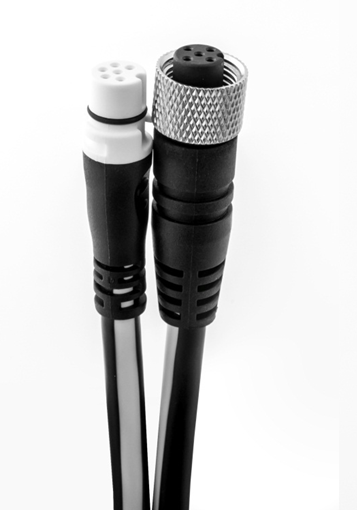In
theory this is a great idea. In practice it is a bad dream because of
continued resistance from electronics manufactures. The premise was to
establish a standard for communication between marine electronics
devices. Today, like computers, networking devices has become a
necessity. But what had evolved was each marine electronics
company developed a proprietary network protocol – Company A’s devices
would not talk to Company B’s devices. This locked the buyer into one
particular brand even though Company A may have a great plotter but a
dog autopilot – you couldn’t mix them and have them communicate with
each other.
Recognizing the problem the NMEA (National Marine Electronics Association) spent years developing a common protocol and then twisting the arms of the manufactures to accept it. Begrudgingly most have – at least partly. Now USUALLY (see radar section) all the devices should communicate with each other across the NMEA 2000 network - often called DeviceNet or N2K.
But not totally giving up on trying to force you to buy all one brand some of the companies have developed proprietary cabling for their units. The NMEA specifications call out a standard plug that is to be used for the network but some of the big names have ignored it. Following this ill-conceived logic was two companies I was working with - Lowrance/Simrad and Raymarine. (Note – many of Lowrance’s devices do use the standard plug while others do not.) So in order to hook up the network there were three different types of cables I needed to use. And none of these are cheap as they usually starting at about $20 the prices increase with the length plus their special connectors and then the cables to adapt to the standard.
On the upside, part of the needed cables are sometimes included with packaged units. For example, the Raymarine EV-100 autopilot included the cabling to connect the autopilot display, control head and the heading sensor as well as the needed cable junction connector. This would be great if you were running a 100% Raymarine network. BUT if you are trying to connect the autopilot to a standard N2K network backbone (the normal connection) you are out of luck. THEY DON”T EVEN MAKE A CABLE TO DO IT!!! Their suggestion is to buy one of their cables AND a NMEA cable, cut them in half and solder one end of each to the other. WHAT!! You got to be kidding!

Above is a photo of N2K cables. On the right is the STANDARD connector called out in the specs. It is intended to be used to connect all devices to the network. On the left is a Raymarine SeaTalkNG "spur" cable it is used to connect a single device/instrument to a matching Raymarine multi connector. At the end of that multi connector is a DIFFERENT style plug that is then used for the Raymarine backbone. Raymarine makes spur cables to hook a single device directly to a STD N2K backbone but what they done make is a cable to connect Raymarine's backbone to a STANDARD backbone. So unless I want to buy all new cables and trash the ones that came with the unit I had to splice a Raymarine BACKBONE cable (different than the spur cable) and a standard N2K cable together! THANKS Raymarine.....
But finally after much head scratching, ranting and serious cash expenditure I had a completed network (with a cobbled together cable). The theory is now everything, even different brands, should play nice together and share data.
But then there is reality!
(see Radar Upgrade)
(see Radar Upgrade)